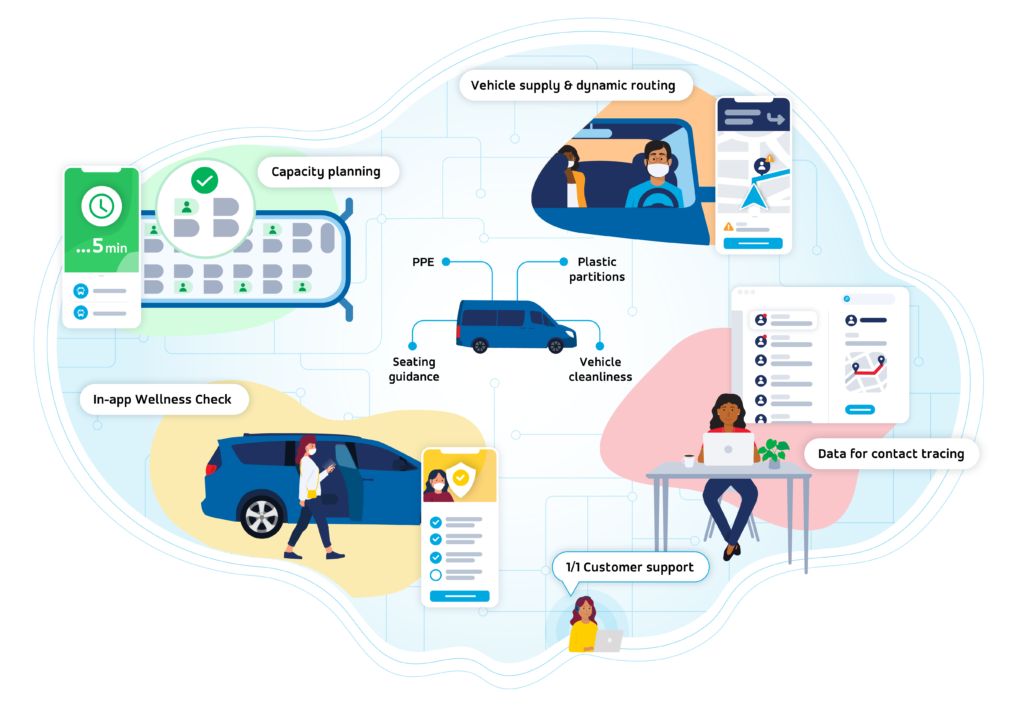Think back to the last time you took a train or bus. You likely punched some buttons or swiped a screen on a ticket machine, pushed through a turnstile, pulled a few door handles, waited on a crowded platform, reluctantly grabbed a pole or two, and then rode shoulder-to-shoulder (or face-to-maskless-face) with strangers. Not to mention all the people who were inhabiting that very same vehicle/seat/air space before you.
So, do you feel like doing that again? In a matter of a few frightening and head-spinning months, society as we know it has changed dramatically. The things we knew we could always rely on — public schools, mass transit, a steady supply of toilet paper — vanished before we even knew what happened. And while it only took a few days for COVID-19 to upend the foundational pieces of communities, the half-life of this virus on public transit could potentially be long lasting.
Even before coronavirus entered the conversation, transportation systems across the U.S. were already suffering from decades of legislative neglect, budgetary shortfalls, decaying infrastructure, and now, extreme apprehension and low ridership, as seen in the chart below. Without safe, customer-focused, data-led technology solutions, it could mean life or death for public transit as we knew it.

What does it even mean to make a transportation service “safe”? To start, every provider that wants to survive beyond 2020 must meet the lowest common denominator: ensuring everyone onboard has adequate PPE, frequent and thorough vehicle cleaning, crystal clear rules around social distancing, sufficient air circulation and ventilation and detailed, transparent communication on safety measures with riders and drivers.
We cannot be content with those table-stakes initiatives; they’re just a small slice of the work that has to be done — fast. Cleanliness, hygiene, and safety are no longer afterthoughts. Operators should put technology in place to collect real-time data for managing capacity and augmenting supply, thus reducing crowds waiting for the bus or train and ensuring social distancing in-vehicle. Seat reservation systems will be a critical enabler of keeping drivers safe and empowering them to manage safety and social distancing on the job.
Riders will return, but not before they feel encouraged, secure, and in control. For that to happen, public transit operators need to think beyond risk-management to risk-mitigation. As a start, app-based technology should be used to teach people how to make safer transit decisions like knowing when not to travel and verifying rider and driver wellness checks before traveling. Advance booking should be a real consideration for all operators moving forward; it will create a secure system for public authorities to trace contact between passengers, should an issue arise. If a theater can require moviegoers to reserve a seat in advance, transit agencies can too. Other digital processes like contactless fare collection and automatic doors are all smart ways that technology can increase safety in this next normal world.
At Via, we’ve known for years that public transit was changing through smart technology — and we’ve been proud to be enabling that change. Shared, safe mobility is one of the most critical elements to our economic recovery — without this foundational piece, we won’t be going anywhere.




%206.png?width=71&height=47&name=The%20Buzz%20Blog%20Hero%20(1750%20x%201200%20px)%206.png)